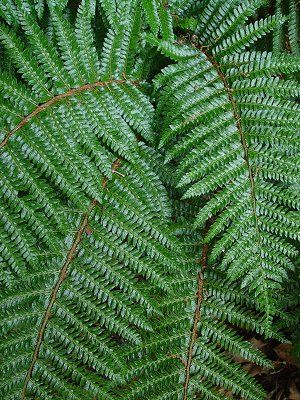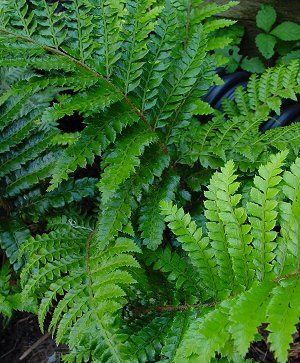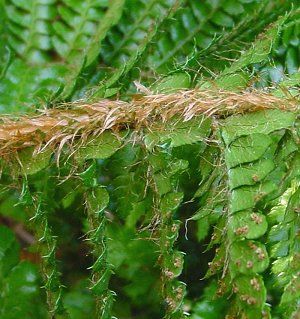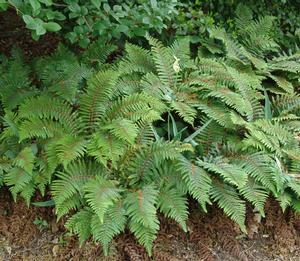Polystichum polyblepharum
Common: Korean tasselfernPolystichum polyblepharum LP32 - 32 per flat
- Height: 18"-24"
- Spread: 12"-18"
- Spacing: 12"
- Hardiness Zone(s): 5-8


Polystichum polyblepharum LP32 - 32 per flat



Meaning "many eyelashes," polyblepharum describes the fuzzy stems of this glossy deep green garden fern. Dependable and hardy, it lends elegance to the shade border and combines well with Carex, Heuchera, and other ferns. Evergreen in warmer zones.
Grow in part or full shade in well-drained soil rich in organic matter. Water well on planting and regularly until established. Drought tolerant.
Polystichum polyblepharum is a neat, dependable, and deep green fern with a form very akin to a luxuriantly appointed shuttlecock. New fronds emerge very upright and as they age, gracefully arch downwards, spreading up to 3’ wide and 3’ tall when the plant is fully mature. The specific epithet means "many eyelashes" with polyblepharum describing the fuzzy stems of this glossy deep green garden fern. In our area, tassel fern is semi-evergreen. At first, tassel fern was introduced to America by horticulturists as a houseplant but then it was discovered it is hardy to Zone 5. Reliable and hardy, it lends elegance to the shade border and combines well with Carex, Heuchera, and other ferns.
Originally from Japan and Korea in warmer areas ranging from sea level to about 1000m elevation, Polystichum polyblepharum prefers moist conditions in part shade to full shade. It can tolerate a wide range of soils, from clay to sand to loam, but must have it be well-drained. Once established, tassel fern can tolerate periods of drought. For best appearance, remove old and dead fronds from the base of the plant. In damp areas, planting the fern at an angle and slightly above the soil line can help with crown rot.
Unless deer are desperate, Polystichum polyblepharum is very deer resistant as well as rabbit resistant, and a pleasing choice in shady locations for the woodland garden or as a foundation planting. When planted en masse, Polystichum polyblepharum helps prevent soil erosion on slopes. Like most ferns, Polystichum polyblepharum has limited relationships with insects and animals, mostly providing habitat for smaller creatures and foliage occasionally used by sap-sucking insects.